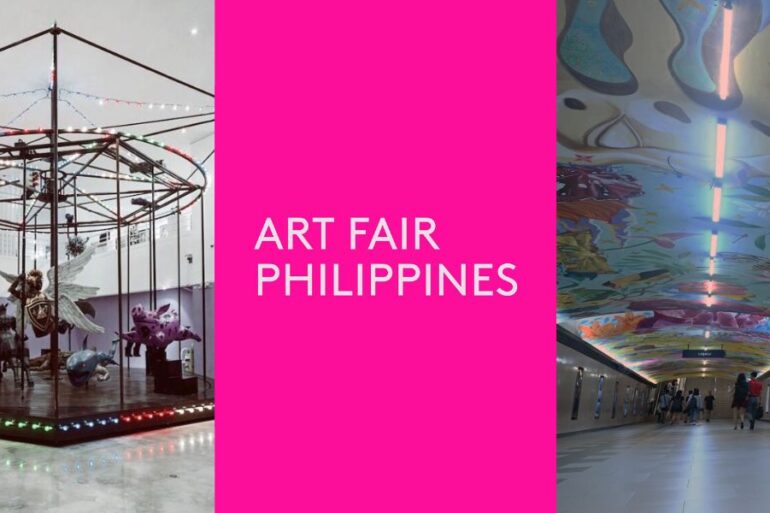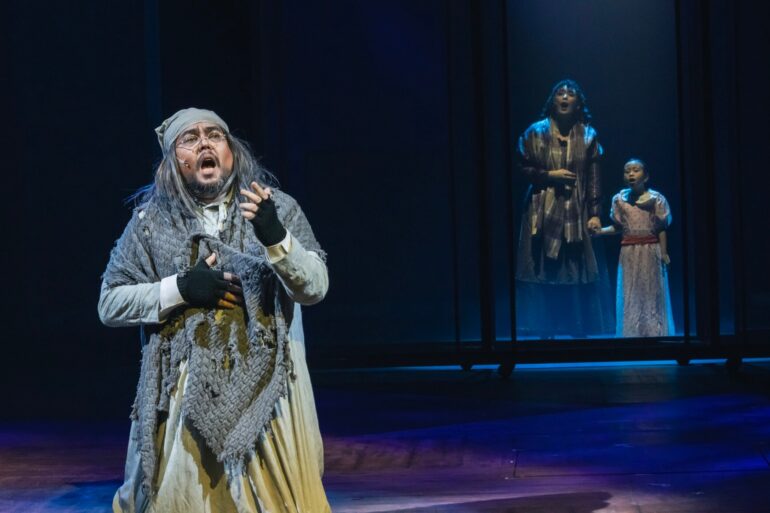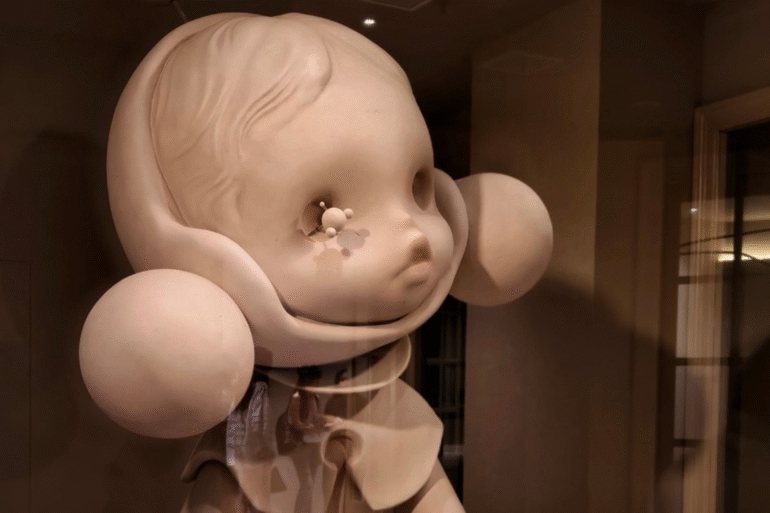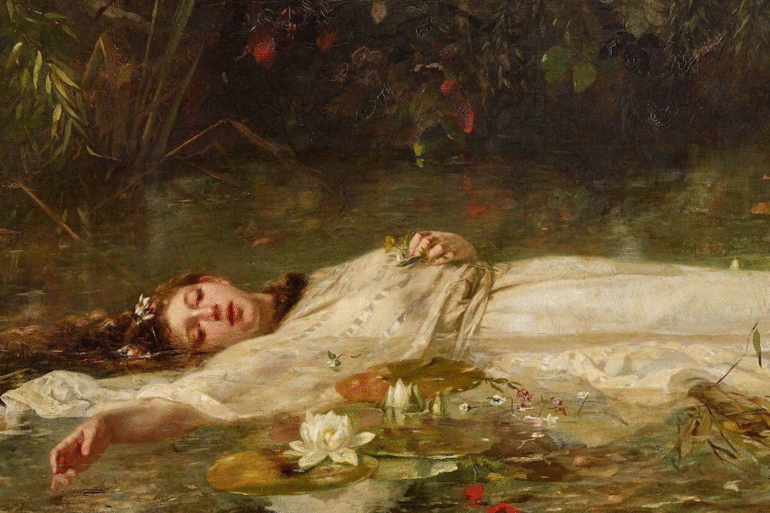The celebrated artist’s second showing of “Click.Share.Tag.” is a striking reminder of “the enduring quest for balance amid chaos.”
Click.Share.Tag. was first exhibited in 2015 at the Cultural Center of the Philippines. Then, it was an expansive tapestry of leather cutouts, stitched, riveted, and fastened to conjure images from Josephine Turalba’s travels, memories, and ruminations.
There’s a sense of slowness and patience with the work. Cutting up leather is a tedious task; piercing and piecing them together isn’t any easier. Sorting through photos of one’s travels and recalling memories in their most vivid to recreate images aren’t possible if one isn’t focused enough.
It’s as if the act of memorializing through Turalba’s chosen medium becomes both a reaction and statement against the acceleration of life, brought about by technology.



“Click.Share.Tag provided me with a brief moment of relief from the overwhelming feeling of fragmentation and brought a sense of wholeness to my experience,” she writes in her exhibition notes for Click.Share.Tag.’s debut at Salcedo Private View. Here, the artist alludes to digital culture—specifically, how social media accelerated the flow and exchange of information in all its forms across people and their devices.
The tapestry’s name refers to the old order in which we upload photos on Facebook. Back in 2015, one had to first choose a photo to upload, click the “Post” or “Share” button, then tag the people included in the photos (in contrast, today’s Facebook interface allows us to not only tag people, but also add locations, feelings, and other details before we click “Post”)
“While the pandemic briefly afforded us a reprieve, allowing from introspection and recentering, the post-COVID landscape beckons us back into the frenetic pace of modern life,” Turalba further writes, emphasizing Click.Share.Tag.’s enduring relevance amid an even more hyper-connected and digitized world; hence, the need to reintroduce it in 2024. “[This particular work serves] as a reminder of the constant flux of our existence and the enduring quest for balance amidst the chaos of our times.”
At Salcedo Private View, Turalba presents Click.Share.Tag. as 10 separate panels, allowing viewers to take a closer look. Investigated closely, one may notice Turalba’s preference for the raw and imperfect: a leather piece with livestock branding or punched numbers might catch your eye. Or, you might notice the penchant for subdued and self-assured colors: olive green, deep burgundy, or cool teal, balanced and interrupted by the slightest hint of bright orange and neon green.



Take a step back, and you’ll be granted parts of Turalba’s grand vision: the brownstone walls of Boston enlivened by graffiti, which recall the artist’s bustling urban life in Massachusetts; vignettes of Manila, which she describes as a never ending and overflowing visual spectacle—an urban manifestation of “more is more;” and churches, mosques, and a Turkish lady, combining Turalba’s learnings and insights on the world’s belief systems.
Though all panels are visually arresting, it was Panel 2—Rooftops of Contemplation—that piqued my curiosity further. In her notes, Turalba describes the piece as “a journey that intertwines [her] personal experiences with the diverse tapestry of cultural and spiritual exploration;” a product of her “Catholic upbringing and [her] encounters with Islam during [her] travels… [which] added layers to [her] understanding of the universal quest for meaning and belonging.”
The Turkish motifs in Rooftops of Contemplation are inspired by Turalba’s trips to Istanbul. In particular, her visit to the Topkapi Palace, the residence of Ottoman sultans and their harems from the 15th until the 19th century, piqued her mind.



“I visited one of the baths, which was filled with colorful tiles and beautiful imagery—no human figures, just fascinating decorations. So I was sitting there, trying to imagine the harems and figuring out how several women can be with one guy and live together. I was trying my best to understand these women and where they are coming from” she recalls, alluding to how Filipinos are culturally accustomed to monogamy.
Approaching the subject with open-mindedness rather than judgment, Turalba’s curiosity also stemmed from a previous awkward encounter with another religion—a friend who was trying to convert her into a born-again Christian.
“I thought then, how can my friend say that, if I don’t convert, I’ll be damned, when there’s a whole new world of other religions and belief systems out there? Were they saying that these other people—whole nations and culture—are damned?” says Turalba.
She further stresses that in her encounters with other religions, understanding and open-mindedness reign supreme over judgment. “I don’t like to judge others, because I myself don’t want to be judged.”



During our interview, I remarked that, indeed, it was only through taking one’s time to understand, reflect, and discern that one can translate even the most contrasting ideas into a work of art—a transformation without the slightest hint of judgment or prejudice.
“These ideas just come together in an artist’s mind. I always look within—and I believe that an artist’s truth is always within. Of course, there are external forces that affect us as artists, and I get bits and pieces from those. Then, it just comes together in the studio through my creative choices, from the smallest of stitches to the ideas that I put out,” notes Turalba.
By taking things slowly, being open-minded, and reflecting from within, Turalba demonstrates an earnest vulnerability with her creative ideas—even with, or especially with—subjects that may challenge other people’s beliefs.








